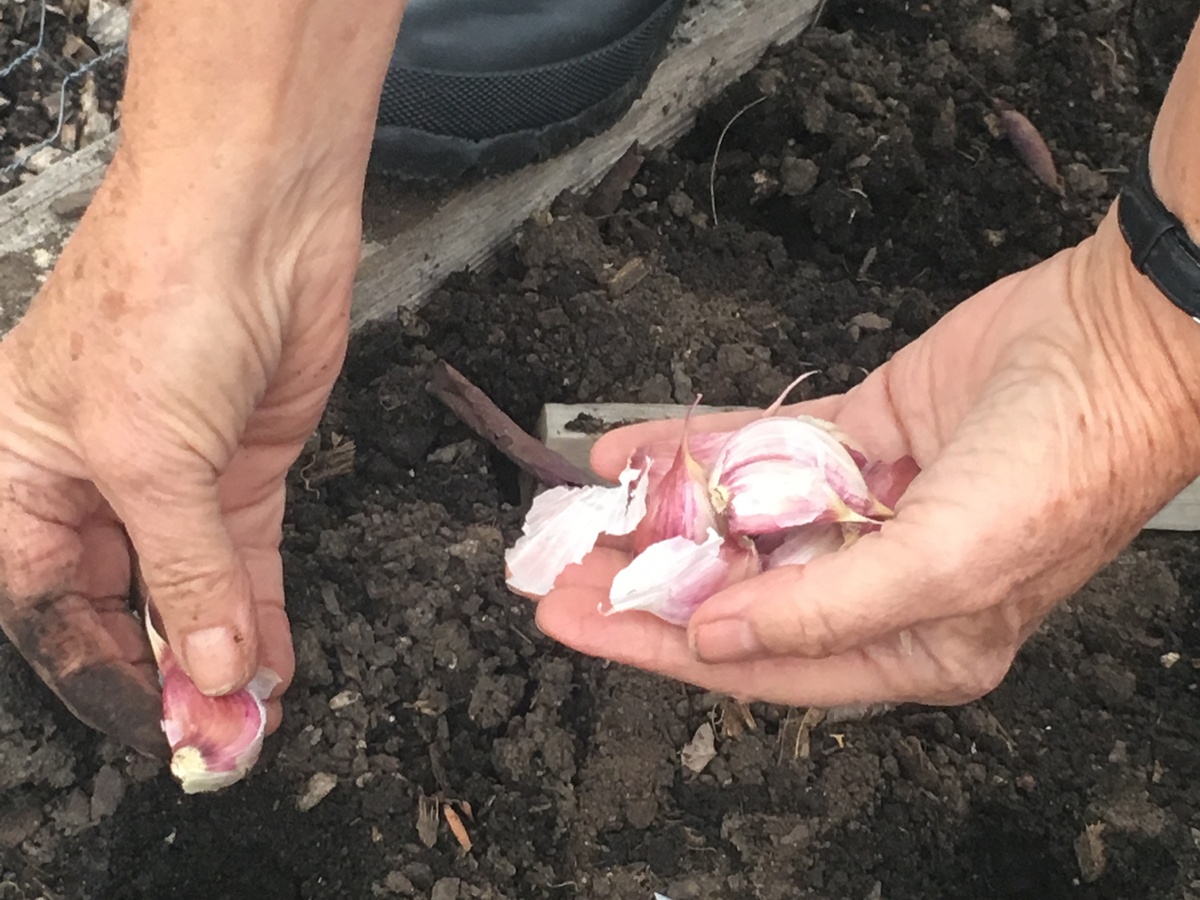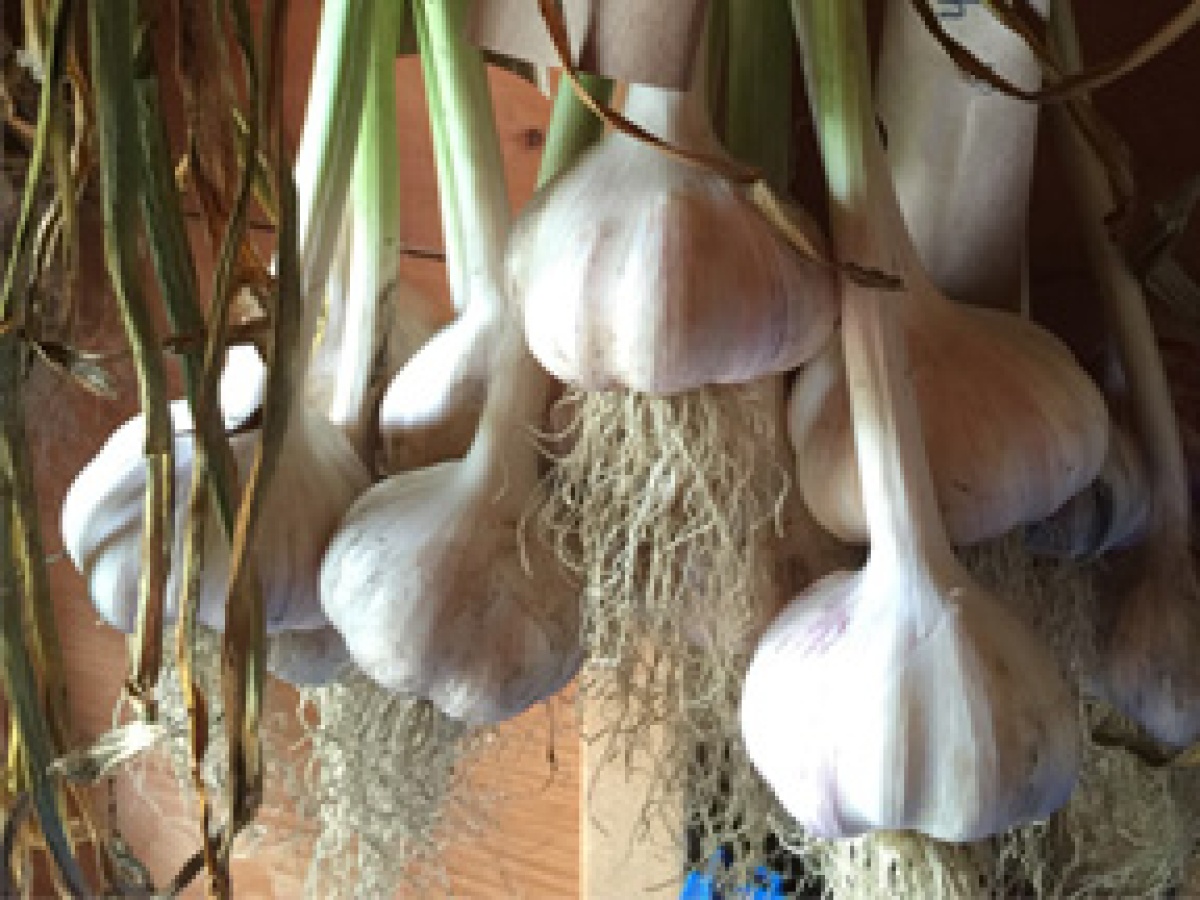Orange Pumpkins, Thanksgiving & Garlic
It’s that time of year when thoughts turn to orange pumpkins and Thanksgiving. Frequently, October is the month to do the last of the garden harvesting and yard tidying. But did you know that it is a planting month? In Calgary, October is the month to plant garlic. Fall planting of garlic provides a jump on the garlic growing season and should result in better yields and larger bulbs.
The garlic type to plant is “hardneck” which is cold hardy and performs well in Calgary. It gets its name from the flower stalk (scape) that grows up the center of the bulb and forms a hard stalk when the plant matures and dries. There are three main kinds of hardneck garlic: Porcelain, Purple Stripe and Racambole. Porcelain has a thick-white papery skin, the tunic, surrounding the bulb and a strong flavour. It stores the best of the hardneck garlics. Purple Stripe become sweeter after cooking and has purple striping on the tunic. Racombole usually has pink to purple colouring in the tunic, is rich in flavour and is the most commonly grown hardneck garlic. It produces beautiful double-curling scapes that are delicious. Within these groups there are many varieties to choose from bearing names such as Music, Chesnok Red and Spanish Roja.

Photo: Pat Matthews
To plant garlic, prepare the bed. It should have light, rich soil and be well-drained. Garlic does well in a raised bed when planted with at least 15 cm of soil between the bulb and an outside wall. Having a well-drained soil is important, otherwise the bulb may rot before spring. Light soil yields readily to the emerging garlic sprout and will make lifting the bulbs next summer easier. As well, light soil usually readily sheds excess moisture. Add compost before planting to give the soil a nutritional boost that the garlic can use when it starts to grow in the spring.
Inspect the bulbs. There should be no signs of mould. If there is mould, cool, damp weather may cause the mould to flourish and grow into the flesh of the clove. Break and remove the outer paper tunic of a healthy bulb and divide it into its cloves. Leave the protective paper on the cloves. Cloves are planted with the pointed end up and the basal end down. The roots grow from the basal end and the green shoot from the pointed end.
Garlic is a member of the Allium genus, so practice crop rotation to help ensure plant health, and do not plant garlic where garlic or onions were planted the previous year.
Plant the cloves 10 cm deep and space them about 15 cm apart. If the soil is dry, water. Cover the bed with 10 cm of mulch. Dry chopped leaves, straw or grass clippings can be used as mulch. The mulch, by providing an insulating layer, helps prevent the cloves from being heaved out of the soil by the freeze-thaw cycles, maintains the soil moisture content and helps regulate the soil temperature.

If you are growing more than one variety of garlic, place identification labels in the bed. Metal tags may be pricey, but they usually over-winter well. Cover permanent marker ink with clear packing tape to prevent fading. Be sure to supplement the bed markers with a journal notation, then next summer you can check your notes if the labels are unreadable or can’t be found.
May you have a wonderful Thanksgiving with family and friends, sharing the harvest from your garden. Perhaps, include planting garlic on Thanksgiving weekend as one of your festive traditions
If you are interested in learning more about gardening in Calgary, visit the Calgary Horticultural Society’s website, calhort.org. Fall is the start of the learning season at the Society.
Deborah Maier
Calgary Horticultural Society


